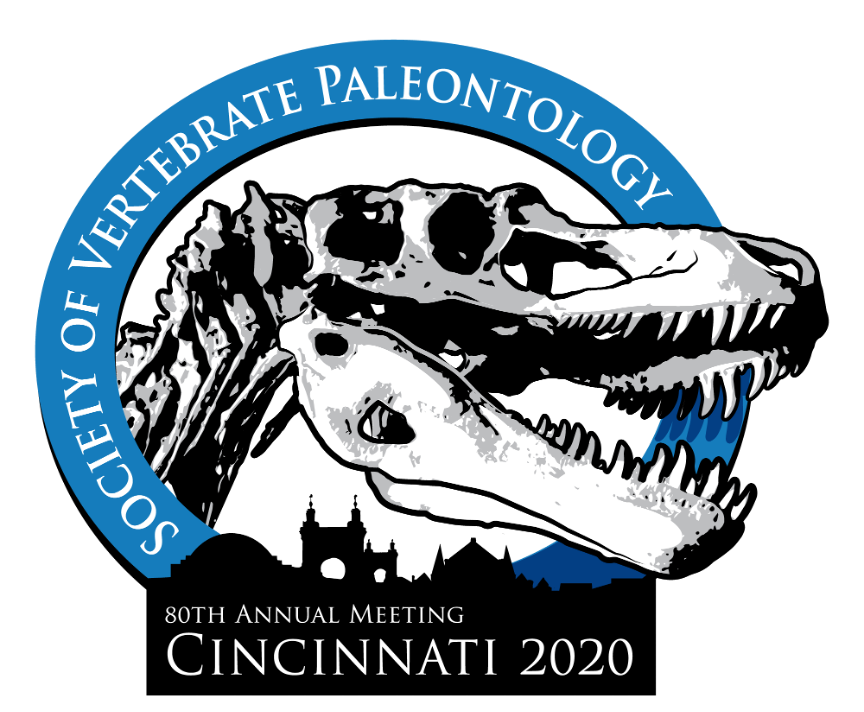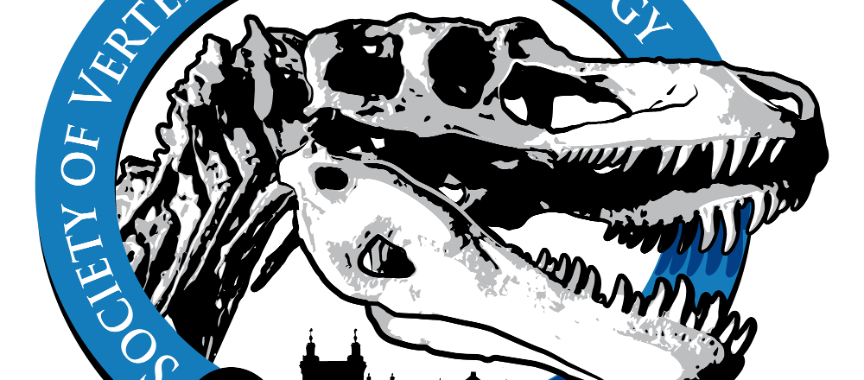
CMC Blog
The (Ancient) World Comes to Cincy!
By: Glenn W. Storrs, Ph.D., Withrow Farny Curator of Vertebrate Paleontology
[This post, prepared in April, anticipated an important paleontological conference planned for Cincinnati. As the COVID-19 pandemic has not yet been overcome, the meeting has been moved to an all–virtual format, but is scheduled to return to our city in 2023, the next available date. It nevertheless may be of interest to those wondering why Cincinnati is such a hot spot for paleontology, and acts as a teaser for the future!]

These are strange times, indeed, what with much of the world on lockdown due to pandemic. However, time and events march on and there is perhaps cause to be optimistic for better times returning in the fall. Assuming that this is the case, one of the big events in paleontology is scheduled to take place October 14-17, 2020, in Cincinnati. Since 1940, the Society of Vertebrate Paleontology has held an annual meeting every fall to present the results of new research in the science. Perhaps unique among scientific conventions, the annual SVP meeting brings together society members comprising university professors, museum curators, government scientists, students, educators, exhibit and laboratory technicians, avocational paleontologists, enthusiasts, artists, and others, generally accompanied by a liberal smattering of science writers and other media members. It’s an opportunity to present one’s most recent research results before the world’s top paleontologists, learn of new developments in the field, attend workshops and field trips, and network with colleagues and friends. It’s the world’s foremost forum on vertebrate paleontology and it attracts attendees from around the world. To be clear, vertebrate paleontology is the study of fossil vertebrate animals, essentially those with bones and teeth, and encompasses everything from fossil fish to dinosaurs to woolly mammoths.
Convened in cities around the world, last year the meeting was held in Brisbane, Australia, and has formerly been to large cities in Germany, England, Canada and Mexico, as well as throughout the United States. This will be the first SVP held in Cincinnati and is to be co-hosted by Cincinnati Museum Center and the University of Cincinnati. So why Cincy?
Cincinnati is a hub of paleontology in the Midwest with more per capita professional paleontologists in the metro region than any other area of the country. The Cincinnatian Series of Late Ordovician rocks underlying the city is internationally known for the abundance, diversity and preservational quality of its fossils. After 150 years of intensive study, it continues to be a natural laboratory for scientists interested in the history of our planet and questions of deep time, biodiversity, climate change, and evolution.
Cincinnati Museum Center has a legacy of discovery 200 years in the making, from the founding of the Western Museum Society in 1818 to today’s award-winning multi-museum complex. Housed in Cincinnati Union Terminal, an Art Deco train station and National Historic Landmark, Cincinnati Museum Center continues to bring the world to Cincinnati through its millions of specimens, artifacts, archival materials and artworks. Its first employee was a relatively unknown artist, John James Audubon, who was hired in 1819 as a taxidermist and background painter. During his brief time in Cincinnati, Audubon began his multi-volume masterwork Birds of America, cementing himself as a world-renowned wildlife artist. After two years of fundraising and collections acquisition, the Western Museum, the predecessor to CMC’s Museum of Natural History & Science, opened in 1820, the first public science museum west of the Alleghenies.
The Vertebrate Paleontology Collection of Cincinnati Museum Center is housed at the Geier Collections & Research Center and comprises over 30,000 specimens, with special emphasis on Paleozoic and Pleistocene material from the middle Ohio Valley tri-state area (Ohio, Kentucky, Indiana), but with historic comparative materials from around the world. Also represented are significant holdings from Mesozoic marine deposits of the US Western Interior and mid-continental terrestrial fossils, notably from the Morrison and Hell Creek formations.
To celebrate Charles Darwin’s 200th birthday, the University of Cincinnati hosted the 2009 North American Paleontological Convention, a gathering of paleontologists and students with diverse research interests that include fossil vertebrates, invertebrates, plants, evolution, and biostratigraphy. UC has a longstanding tradition of paleontological research and teaching in its own right, awarding undergraduate and postgraduate degrees in geology that often include paleontological specializations.
Cincinnati is also home to the world’s longest continually operating amateur paleontology society, the Dry Dredgers Association of Amateur Geologists and Fossil Collectors, founded in 1942. The Kentucky Paleontological Society, based in Lexington, Kentucky, operates in the area and collaborates with the Cincinnati community on numerous projects. The collaborative approach and atmosphere of mutual respect that exists between the amateur community, university scientists, and museum professionals in Cincinnati makes our city an excellent venue for the dissemination of paleontological knowledge and the continued understanding of, and respect for, evidence-based approaches to science and public policy.
A short drive from downtown is Big Bone Lick State Historic Site, rightly described as the birthplace of American vertebrate paleontology. It was here in 1739 that European explorers were first made aware of the existence of Pleistocene fossils that would later figure prominently in the history of science, documenting for example, the concepts of extinction, comparative morphology, climate change and evolution. William Clark, at the behest of Thomas Jefferson, conducted the first organized paleontological excavation in the Americas here in 1807.
The 2020 meeting logo features the dinosaur Daspletosaurus from the Upper Cretaceous Judith River Formation of Montana set within an elliptical border. The blue color symbolizes the position of Cincinnati on the banks of the Ohio River. The lower boundary is composed of a silhouette of Cincinnati architectural icons, featuring from right to left, the Over-the-Rhine neighborhood, Cincinnati Music Hall, the John A. Roebling Suspension Bridge, and Cincinnati Union Terminal, home to Cincinnati Museum Center and intended site of the 2020 SVP opening reception. Following a nearly three-year period of extensive restoration, Cincinnati Museum Center reopened to the public in November 2018 in one of the country’s most important Art Deco buildings. Preeminent among the new exhibit galleries is Dinosaur Hall, where the skeleton of Daspletosaurus welcomes guests.
Should conditions allow (fingers crossed!), SVP will convene in October in the Duke Energy Convention Center, downtown, but at the time of this writing anything can happen. For more information about the meeting, associated events, and its status as the pandemic evolves, see http://vertpaleo.org/Annual-Meeting/Annual-Meeting-Home.aspx
Museum Admission
Includes Cincinnati History Museum, Museum of Natural History & Science and The Children's Museum
| Adult: | $22.50 |
| Senior: | $15.50 |
| Child: | $15.50 |
| Member Adult: |
FREE |
| Member Child: |
FREE |
Members receive discounts!
Become a Member today to save on programs, exhibits and films throughout CMC.
Museum Hours
Open Thursday – Monday
10 a.m. to 5 p.m.
Closed Tuesday and Wednesday
Closed Thanksgiving Day and Christmas Day
Member’s-only early entry: Saturdays at 9 a.m.
Customer Service Hours:
Monday – Sunday, 9 a.m. to 5 p.m.

